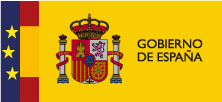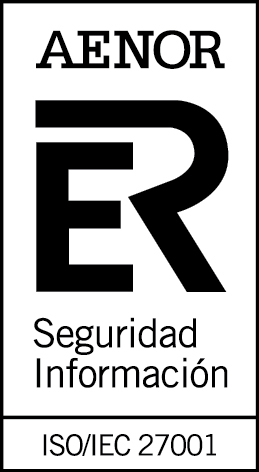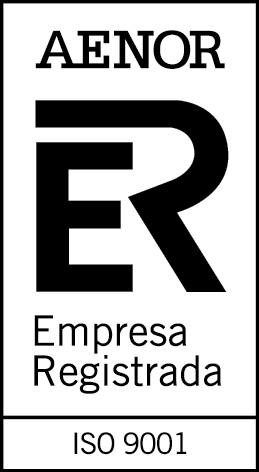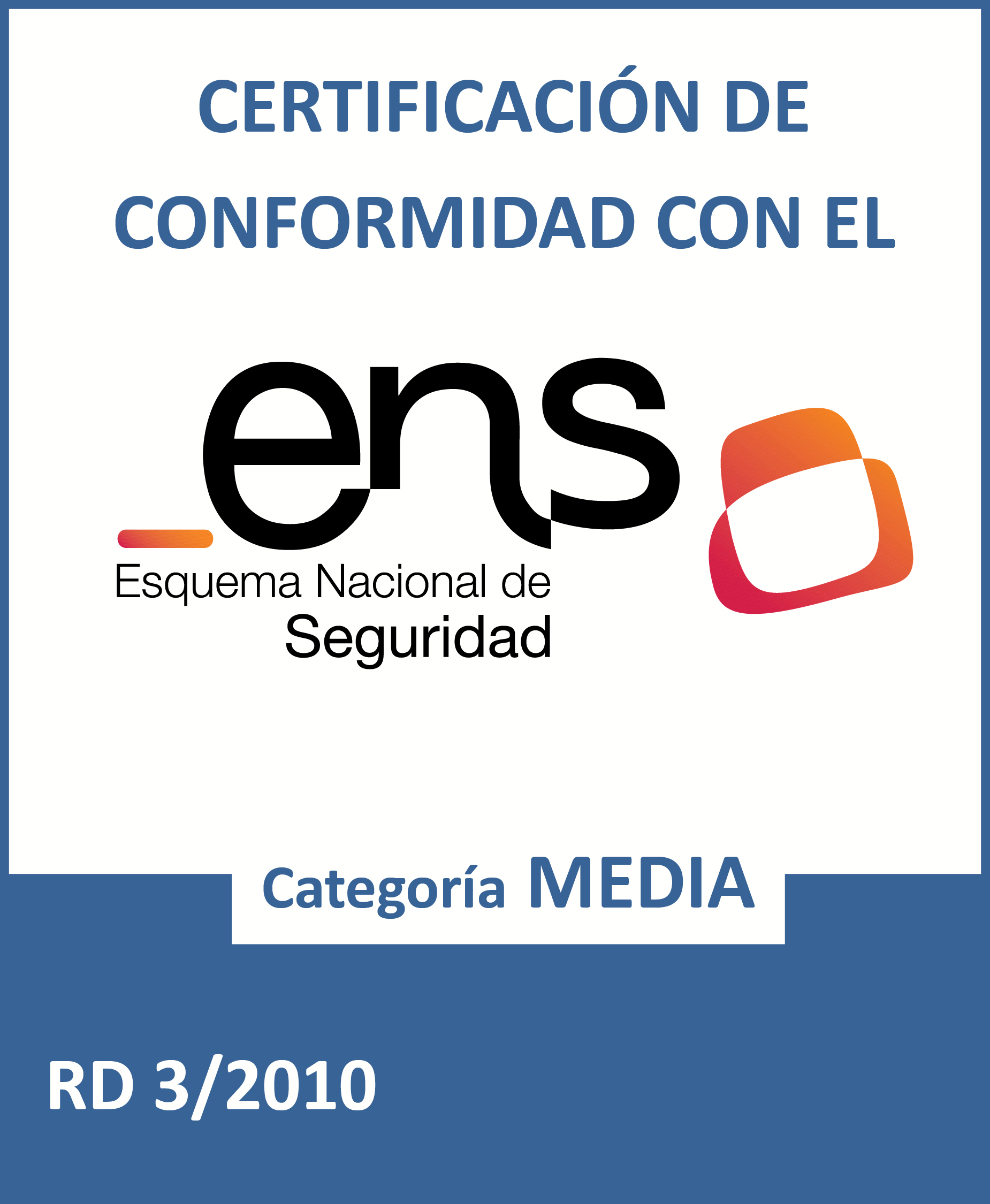Interview with Antonio F. Rodríguez Pascual
Fecha: 24-01-2017
Nombre: Antonio F. Rodríguez Pascual
Sector: Science and technology
Organismo, Institución o Empresa: Assistant Deputy Director of CNIG
País: Spain

Interview with Antonio F. Rodríguez Pascual, Assistant Deputy Director of CNIG.
-
What is the place of geospatial information within the general open data ecosystem?
To provide some figures, geographic information is inevitably present in seven (election results, national map, weather forecasts, pollutant emissions, location dataset, water quality, land ownership) of the thirteen essential datasets included in the Global Open Data Index of the Open Knowledge Foundation. It is also one of the types of information recognized as "highly important" by the Open Data Charter. According to the ASEDIE's report on the Infomediary Sector 2016, it is the third sector of the re-use market in terms of annual turnover, which represents a little more than 254 million euros, behind the Economic (20 %) and Market Research (27 %) industries. Without taking into account that the geospatial component is also present in two of the most relevant sectors: Market Research and Meteorological Information.
This type of information is considered one of the most important. It is necessary to reflect that, together with the statistical data, they are the best model of the real world that we have to make decisions, study problems, analyze phenomena, manage our resources, make plans and, in general, learn about the world.
It is a key epistemological tool. We always say that everything happens somewhere and it is true that, if we consider that indirect references, such as those defined by addresses, are also geographical, more than 80 % of the data managed by organizations are geographic data. Its importance has increased enormously with the almost permanent location of people through smart phones, the proliferation of sensors and georeferenced cameras and the development of the Internet of Things (IoT), which is already generating a sort of infosphere, a virtual space full of resources with coordinates that reflect and describe reality.
“More than 80 % of the data managed by organizations are geographic data.”
2. How has the European Directive INSPIRE helped the openness of geospatial data in Spain? At what point has this sector reached nowadays?
The implementation of the INSPIRE Directive in Europe and, especially, in Spain has contributed significantly to the openness of geospatial data. The European Commission has long recognized the synergy between the two activities. The fact is that in countries where the Inspire Directive is best established (Nordic countries, the Netherlands, the United Kingdom, Spain...) there are more open data and vice versa. This is probably due to the fact that the Inspire Directive has spread and promoted the idea that it is very positive to share geographic resources, both data and services, and this idea has spread to other sectors.
Especially in Spain, with the development of the Spatial Data Infrastructure of Spain (IDEE), whose motto is "If you share, you always gain more" (quote from "La buena suerte" by Álex Rovira and Trías de Bes, Uranus, 2004), the open data volume has increased significantly in recent years.
In a CNIG analysis made in 2016, from more than 100 Spanish pages of geographic information identified in which official geospatial data can be downloaded, 20 % of them offer partially open data (for non-commercial uses), 20 % closed data, 32 % offer completely open data and 36 % do not specify the use conditions, so we suspect that in a good number of cases the intention is also to publish open data and perhaps we can speak of at least 50 % of the offer of official geographic data.
Much progress has been made in the openness of geospatial data in Spain, but we are not completely satisfied, we have to progress even further. Antonio Gramsci said that "crises are those moments in which the old dies without the birth of the new" and I think that is the current situation in the area of Geomatics. There is an obsolete order based on desktop applications, the accumulation of data in silos as a capital to be profitable and monolithic power nuclei that do not just disappear and a new order that uses resources in the cloud, service-oriented architecture, open and networked organizations and new business models that have not been fully extended.
It is sharing with indirect benefits versus accumulating. A necessary change that points towards the information society, what the EU calls the Digital Single Market. The technicians are responsible for the technological revolutions to be produced at the desired rate and the collateral effects to be minimized.
According to the above mentioned ASEDIE’s report, the geospatial sector occupies the second place in the infomediary sector in terms of jobs generated, with 2,976 employees, 19 % of the sector, only behind the market studies, with 33 % with a light financial structure, since it has only 6 % (almost 18 million euros) of the subscribed capital by the sector and one of the lowest default risk.
And in the "Study of characterization of the infomediary sector of Spain" 2014, carried out by ONTSI, it is established that the geographic information sector is the most important within the re-use of public sector information, with 35 % of the companies, because urban planning information and meteorological forecast information are included.
3. According to your experience, what barriers hinder the openness and re-use of geospatial information in the public sector? What solutions do you propose to eliminate such obstacles?
It is a difficult question to answer, there is a wide variety of barriers and difficulties. First of all, I believe that there is a natural resistance to change, so to speak metaphorically our environment is full of boatmen who want to charge tolls who cross the bridges. But it is necessary to recognize that the changes of mentality are not easy and that the administration is moving in a short time from being considered part of the government that directs the society life to an actor who manages resources of all the citizens and is at their service; the data-producing agencies are evolving to become web service providers, they open up to collaborate with other public and private organizations... there are many changes described very well, for example, by Enrique Dans in "Everything is Changing" and Pekka Himanen in his book published in 2002, "The Ethics of the Hacker and the Spirit of the Information Age."
Secondly, there is also a lack of training in 2.0 web technologies, ISO 19100 standards, OGC standards and the applications that implement them, which is not easy to overcome in a short time. They are new technologies that involve complex formats and languages (UML, XML, GML ...), very specialized models and a new way of working.
“The data producing bodies are evolving to become web service providers, they open up to collaborate with other public and private organizations…”
Thirdly, it should be mentioned that the public administration is a machinery with considerable inertia, bureaucratic procedures that are sometimes very heavy and employees difficult to recycle. Finally, it should be mentioned that greater political support and commitment at the highest level would always be desirable.
As regards solutions to overcome these barriers, apart from the obvious ones, such as training courses, awareness events, implementation of electronic procedures, etc., all of them aspects in which a great effort is being made and Spain is well positioned (our country leads the European classifications of open data and e-government after the Brexit), we would like to mention two lines of action that seem to be particularly useful:
- Openness to the web. I think it is very positive for an administration to be present on the web and interact with its users through blogs, mailing lists, social networks and surveys. This allows us to learn about their concerns and needs, empathize with them and better meet their needs.
- Strategic planning. The experience we have had in implementing the Strategic Plan of IGN and CNIG has been excellent. It guides all human and physical resources, in the same direction; it establishes in a clear and participative way the vision, mission and objectives of the organization; it integrates and motivates the staff and defines a set of indicators to measure the greater or lesser success of the institution in an objective manner, taking into account that maximizing the economic benefit is not the end of the administration, but rather having the best possible investment/social impact rate and these variables are better evaluated if there is a Strategic Plan.
In summary, a Strategic Plan gives meaning to all the activities of an organization, directing them in the same direction and integrating the staff. It is a tool always recommended, but even more in paradigm change processes.
4. Nowadays, IGN is committed to publishing its data under the CC BY 4.0 license. To what extent do you consider essential the use of this type of license in the promotion of the data re-use?
The use of implicit licenses, which implies tacit acceptance, and standard licenses is essential because they enable license interoperability. Indeed, the alternative of having an own license defined in a text, which has to be written in one of the official languages in Spain, has the serious drawback that it compels users from countries whose official language is different (such as Germany, France, the United Kingdom, China, Japan, Korea and the Arab countries, for example) to tackle a series of difficult tasks if they want to use our data to georeference other information under another license, and create a value-added work with all legal guarantees: request a sworn translation into the language of the license text, an opinion that determines how the terms of the other license are mixed... While the Creative Commons 4.0 licenses are standard licenses internationally known and defined, which we already how to mix and hybridize with other type of licenses.
As for a license that only includes recognition, we believe that it is the most free and least restrictive license, since it focuses on the essential part of copyright, moral rights, without worrying about what the users may do with the data. In that sense, there are organizations that ask themselves what private companies are going to do with their data and if they are going to take advantage of the costs of generate them. The answer to this concern would be that everything they are going to do is positive for society: generating jobs, wealth and profit, paying taxes, disseminating data, giving them usefulness and meaning, spreading them, creating economic activity, and so on.
5. How has the data download policy at the National Geographic Information Center (CNIG) evolved in recent years, and what has the change meant for the Center?
In a first stage, which lasted almost 20 years, from 1989 to 2008, the CNIG commercialized the ING’s geographical data according to a price order, with discounts for research of up to 90 % and in line with data policies prevailing throughout Europe.
In a second phase, which began with the Ministerial Order FOM / 956/2008 and lasted seven years, until the end of 2015, the most important data products of the IGN (Geodesic Vertices, Limit Lines, Gazetteers and Population Databases) were defined as National Reference Geographic Equipment (EGRN) and established as open data. The remainder was defined as free data for non-commercial uses. In this way, IGN became the first official cartography producer in Europe to partially open up its data. However, this policy has been generating a very considerable increasing overhead, since more and more complicated use cases have been arising in which it was not trivial to elucidate whether or not there was commercial use.
Finally, in December 2015, the Ministerial Order FOM/2807/2015 was adopted, which defines all IGN data products and geographical services as open with the only condition for recognition, which has placed us among the most advanced countries of the world in the field of re-use and publication of open resources. Predictably, the aforementioned Global Open Data Index 2016, which will be published soon, will place Spain in the first place in the international classification of open geographic data along with other 11 countries.
“In 2015, the Ministerial Order FOM/2807/2015 was adopted, which defines all IGN data products and geographical services as open”
6. What point has the CNIG reached in opening up its information? What steps will the institution follow in terms of open data?
At first we believed that open data was a matter of free information, then we realized that the terms of use were more important (the license) and now we are aware that actually publishing open data means making a continuous and constant effort to minimize the barriers that hinder their use, something that of course involves gratuity and an open license, but it also includes a number of details, as it is reflected in the open knowledge definition by the Open Knowledge Foundation. As an example, we can mention that the option to download products in one run has more impact on the download number and volume in the CNIG than the new use license. The most important is to minimize barriers of all kinds and to progress in that line, what we will dedicate from now on.
"Publishing open data means a continuous and steady effort to minimize barriers that hinder their use"
We should also, as National Contact Point of the implementation of the INSPIRE Directive in Spain, go in-depth in the implementation of this directive and, of course, continue to collaborate with red.es in the integration of the national open geographical data in the data portal of our country.
In that sense, our next probable steps will be:
-Using a CC BY 4.0 license, once all the bureaucratic and administrative processes are completed.
-Progressing in the publication of information in open formats, this aspect still has to advance a lot in the field of geographical information where quite often the most effective, comfortable and widespread formats such as shapefile and ECW, for example, are not yet open formats.
- Formally defining a PSI Re-use Plan for IGN digital geographic data.
- Disseminating and promoting the publication of open data and services.
7. From your point of view, what are the main reasons that should encourage public administrations in Spain to open up their data?
We have identified up to ten good reasons to open up the data generated by the Public Administrations:
1) A question arise once a public body generates data with public resources, derived from citizens' taxes, and in the exercise of its functions, aimed ultimately at serving the needs of society: To what extent is it entitled to limit access to the data produced to those same citizens by invoking copyright?
2) Open data are beneficial to a country's economy, as shown by successive studies and analysis. As early as 2000, the well-known PIRA report, commissioned by the European Commission to conduct an extensive economic analysis of the exploitation of the Public Sector Information (PSI) sector in Europe, made an extensive comparison between USA and Europe, two very similar economies in size at that time. It concluded that each euro invested in the production of public geographic data in USA was translated into an increase of the ISP sector of approximately €44, while in Europe that increase was only about €8. One of the reasons for this difference was the fact that federal geographic data in USA were open, while in Europe they were completely closed. All the studies that we have already done on the same subject have confirmed these conclusions.
3) Several international initiatives directly related to economic development promote the adoption of open data policies as a clear growth and social benefit factor and underline the importance of geographic data as one of the priority types of information in this regard. To mention only three of them, the Open Data Charter led by the G-8 in 2013, the International Open Data Charter, supported by the G20 and the United Nations in 2015, and the Agenda 2030 for sustainable development, recommends open data, especially the geographical ones.
4) According to the experience of the CNIG during the last years, we can say that due to globalization, the democratization of cartography, the gratuity economy and the emergence of web services, revenues from commercial use licenses are less relevant. In 2015, total benefits accounted for only 8 % of the CNIG budget. It can be concluded in general terms that the commercialization of geographic data has long ceased to be a good business.
5) An open data policy allows an official geographic data producer to take advantage of the possibilities of Neocartography or Voluntary Geographic Information, because effectively how can voluntary citizens be motivated to collaborate in the collection and production of geographic data if, in the process, they must give up the ownership of some data that we then intend to sell them?
6) On the other hand, it allows the GeoInstitutes compete on equal and similar conditions, in terms of permitted uses and licenses, with other certainly popular actors who offer open geographical data and services or in quite open conditions, such as for example OpenStreetMap, which has an ODbL license similar to CC BY-SA, Geonames with its CC BY license or the Google Maps API and Carto services with their freemium business models, which offer free services to a certain number of queries if certain conditions are met.
7) If the official organisms that provide geographic data offer reference data, geographic data whose objective is to serve to georeference data of other subjects, it is logical that they promote their use in all type of applications and by all type of users, for which it seems clear that the best situation is spreading them as open data.
8) The experience of the IGN during the years in which it commercialized geographic data was that this information policy was a very important brake for the research, even though discounts up to 90 % were established for R&D uses, given the permanent scarcity of resources for this purpose. Many research papers were unfeasible, so open data are actually a stimulus to research, even promoting it.
9) It is a real social demand that, since some years, appears within the GI sector in some media and social networks. We should mention the campaign for the release of geographic data maintained by "The Guardian" in the United Kingdom and the appearance in London in 2004 of the OpenStreetMap phenomenon, among other reasons, in reaction to the closed data policy maintained by the Ordnance Survey. Curiously, this is one of the few demands in which both the right-wing party and the neo-liberals agree, requesting a light public sector at the service of the private sector, which transfer them their data, and the left-wing ones, who conceives an administration at the service of the citizen who provides with all the data it manages.
10) Finally, it should be noted that open data always generate very relevant intangible returns, the use of data in research projects and prestigious international initiatives, the improvement of corporate image, increased presence in the network and social networks, synergies with other sectors of application, and so on. And sometimes indirect benefits are not as intangible, as when opening up the data encourages the development of applications on them that are then useful for the data producer in their production processes.
All this, together with other reasons, makes it generally advisable for a producer of official geographical data to adopt an open data policy, although we also understand that in some cases there are public bodies that cannot do so because it is prevented by the legal framework in force or by their political and administrative situation, which forces them to self-finance in whole or in part, which makes inevitable that they try to obtain an economic return for the use of their data. In these cases, it must be remembered that, given the high cost of generating geographic data, the return obtained from marketing, taking into account the market prices, covers only a small part.
In summary and as I have already mentioned, I believe that technicians and public officials must be committed to progress and have the moral obligation to push technological revolutions to make them profitable, trying to minimize the adverse side effects that may occur.











